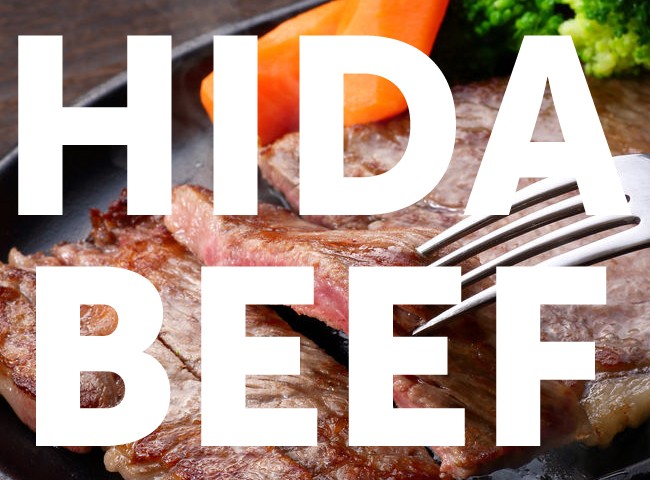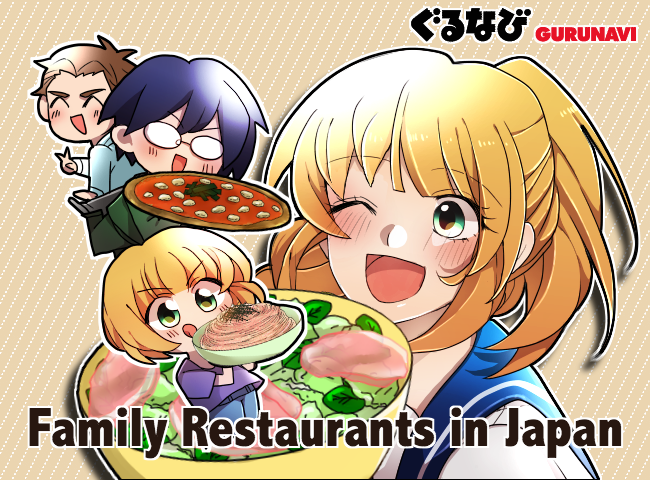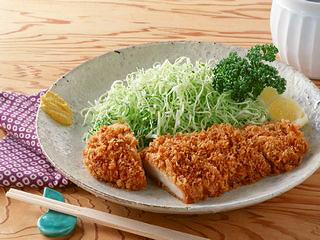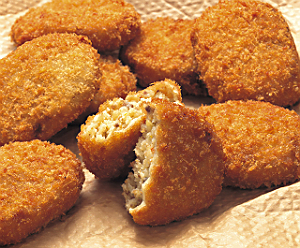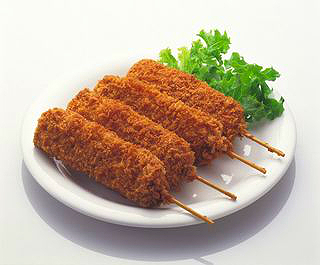Kushiage: The Best Japanese Deep Fried Food on a Stick!
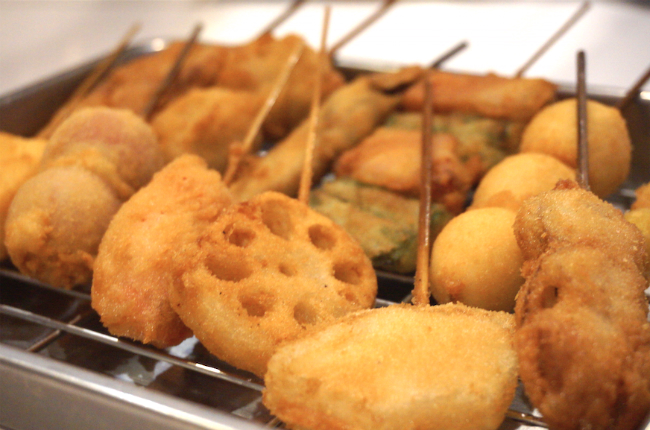
Learn why this deep-fried “food of the masses” continues taking Japanese taste-buds by storm, and find out where you can get some Kushiage for yourself!
What is Kushiage/Kushikatsu
Kushiage, also known as Kushikatsu, is essentially deep fried food on a stick—or more specifically, battered meat and veggies. It can be found all over Japan but is most famous in the Shin-Sekai neighborhood of Osaka, where it is called kushikatsu. The “kushi” refers to the bamboo skewer used, and the “katsu” to the type of meat cutlet. Kushikatsu can be made from almost anything, from meat to vegetables to cheese, which are then put on a skewer and fried in a drool-inducing panko-breadcrumb coating. If it sounds dangerously delicious, that’s because it is.

Kushikatsu is usually served with a kind of Worchester-like tonkatsu sauce, but there are slightly different sauces and ways of eating kushikatsu throughout the various regions of Japan. In Eastern Japan where it is called Kushiage, the most common type is pork cutlet alternating with onion on a stick. In the Nagoya area, a type of sweet miso sauce is used to flavor the kushikatsu. In Osaka, asking for “kushikatsu” will usually get you fried beef, but all kinds of fish and seafood and a variety of vegetables are also common. In Western Japan, especially the Osaka area, they will put almost anything on a stick!
History of Kushiage/Kushikatsu
It is said that kushikatsu got its humble beginnings in Osaka in 1929, when the proprietress of the now-legendary Daruma began serving skewered meat for the local laborers. It became popular during the war era as a cheap, delicious, and easy to eat food for the working class. It was made with hearty ingredients like meat, onions, and potatoes, and could be eaten on the street at a food stall. A thick batter gave it more than a delicious crunch—it also helped to bulk up the workers and fill their bellies. Kushikatsu is definitely a food for the common people, and it continues to be popular with workers, students, and people of all ages. Nowadays there are some upscale restaurants offering kushikatsu with unique ingredients, but at its heart kushikatsu is still a food for the masses that can be enjoyed by anyone. It is quite possibly one of Japan’s best deep fried foods.
How to Eat Kushikatsu
Kushikatsu is easy to eat since it is served on a stick! You can eat it straight off the stick or use your chopsticks to transfer the kushikatsu to a small plate. Most people give their kushikatsu a generous dunk in the provided sauce first. Be careful though – double-dipping from a shared sauce container is big no-no! Sauce-lovers, don’t fret if you didn’t get enough sauce the first go-round; you’ll often be given cabbage on the side which you can use to scoop extra sauce onto your plate as needed. Supposedly the cabbage helps with your digestion as well.
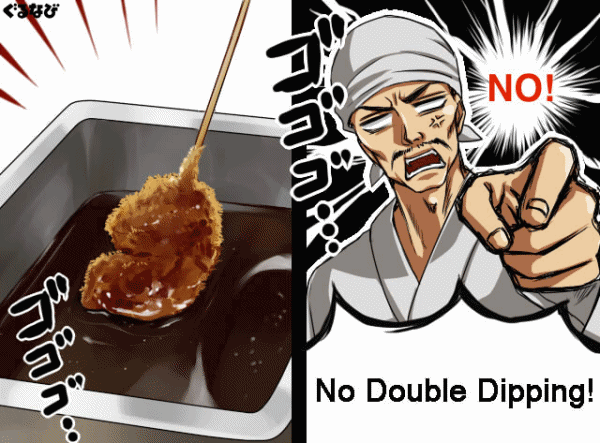
It’s best to order just a few skewers at a time so they are always fresh and hot off the fryer. Usually you pay per stick unless you choose a set menu. Set menus are a great way to try a variety of kushikatsu. Otherwise, prices per stick range from just 50 yen to around 200 yen, so it’s very af-fordable! And of course it tastes delicious with some beer on the side.
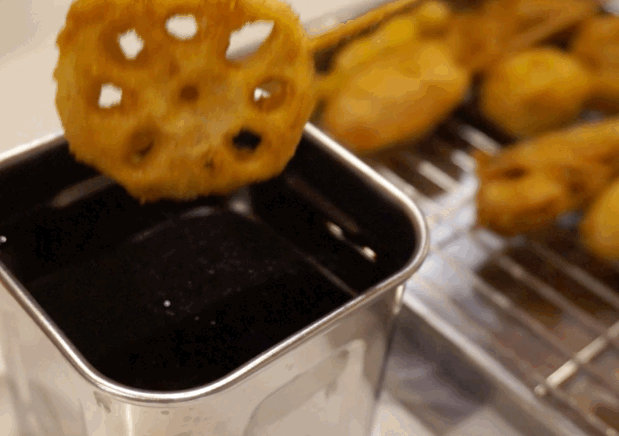
Popular chain restaurants will likely have an English menu available, but kushikatsu veterans will probably get to the point where they don’t even need it! Many kushikatsu restaurants have mainly counter seating and some are even standing only. The advantage of counter-seating, however, is that you can see the chef fry the kushikatsu fresh right in front of you. When you are done eating, there is a tall bamboo cup provided for your used skewers.
Common Types of Kushikatsu
Meat:
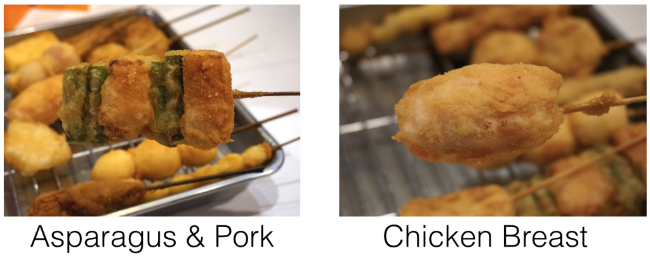
Common types of meat kushikatsu include beef, pork, tsukune (a chicken or fish meatball made with egg), and various parts of a chicken such as breast meat, organ meat, skin (torikawa), and cartilage (nankotsu). Often two ingredients are combined on a stick for double the delicousness, such as meat wrapped in a green pepper, asparagus wrapped in bacon, and cheese with fish-paste cake.
Seafood:

Seafood kushikatsu includes shrimp, scallops, octopus, squid, mackerel, fish-paste cake, and shishamo (a small whole fish with fish eggs inside)
Vegetables:
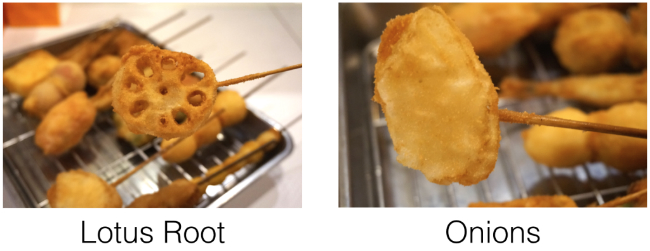
For vegetables, onion, potatoes, bell peppers, sweet potatoes, asparagus are common. Some other vegetables used in kushikatsu are bamboo root (takenoko), okra, burdock root (gobou), lotus root (renkon), Japanese pumpkin (kabocha), and tomatoes.
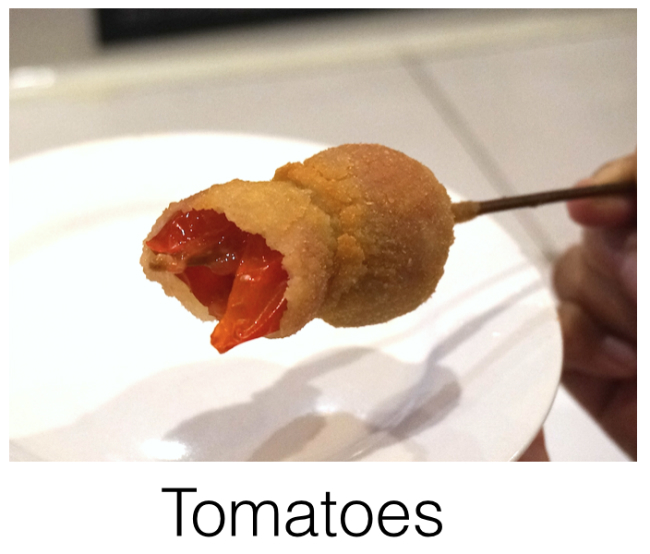
Others:
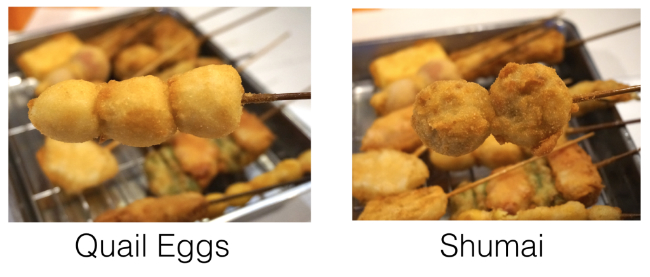
Other varieties of kushikatsu are quail egg, cheese, dumplings (gyoza), and pickled ginger (benishouga). Of course, every kushikatsu place you visit is bound to have secret varieties of their own.
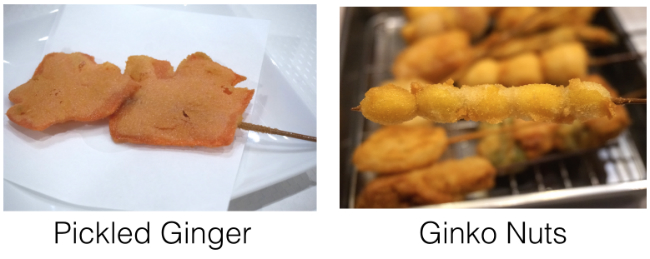
Some slightly unusual kushikatsu include gingko nuts, chestnuts, or bananas. Some restaurants even sell dessert kushikatsu, such as fried bananas, rice cake (mochi), or even fried ice cream! Part of the fun of kushikatsu is trying new things, and you only can order just one stick of each item, so be adventurous and try something new!
Trying out Kushukatsu at Dongara-Gassyan
Now after telling you guys all about kushikatsu or kushiage, I got hungry and stopped by a popular kushiage eatery in Shinjuku called Dongara-Gassyan. What?? I can’t even say the name of this place right! In total, they have two kushiage locations and one that is not. This time, I went to one of their kushiage locations in Shinjuku Sanchome.

After taking a look at the menu, I decided to order a large variety so that I could try everything. I was so ready for heartburn and a three hour nap after eating , but it was worth it.
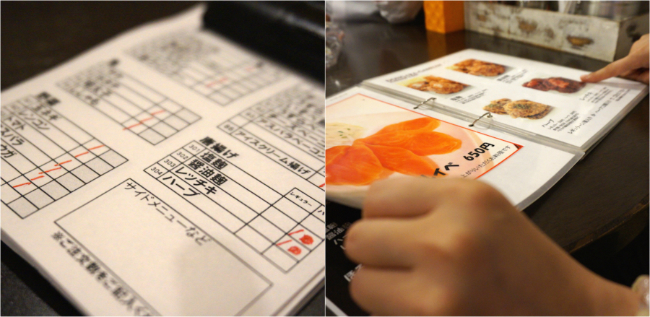
When the fried foods on a stick all came out, I felt like this would be something served back at an American state fair or carnival. It’s a good thing that customers are also given a bowl full of cab-bage munchies to help them avoid heartburn! Everything was hot, crispy, and juicy, just as ex-pected.

Now besides the standard kushiage, I also ordered three other special items! Introducing…JUMBO Katsu dipped in Miso! It was longer than my face.

There’s usually nothing special about karaage, basically Japanese fried chicken, which is a lip-smacking staple of many restaurants around the country. But this particular karaage is a recom-mended item at both of their Shinjuku-Sanchome restaurants. They offer four different flavors; herb, soysauce, original, or spicy. I opted for Soy Sauce and Spicy , which really puts the Colonel to shame!
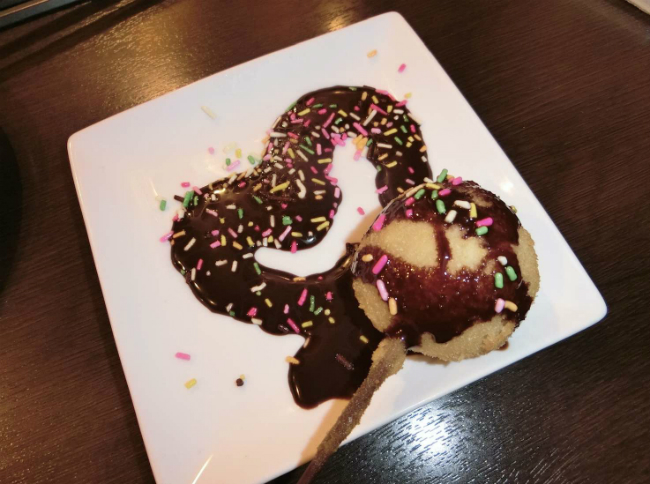
Last but not least, I had ice-cream kushiage. The outer layer was perfectly crunchy, yet chewy. Why? Well, I found out that its actually fried ice cream mochi! One special item that I had forgotten to order was Baby Star kushiage. If you don’t know what that is, Baby Star is a brand of dried ra-men snacks, so imagine those on a stick! So there you have it. If you like everything fried, want to try crunchy,chewy, gooey fried mochi ice cream, or just have a thing for food on a stick, then check out Dangara-Gassyan in Tokyo!
How This Kushikatsu Chef “Made a Name” for Himself
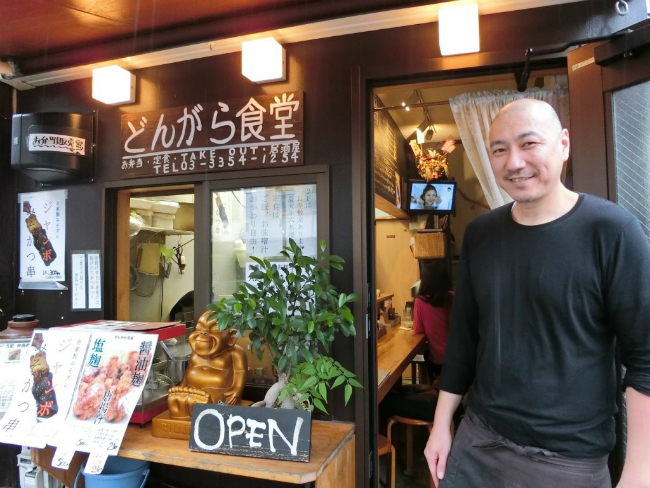
What’s in a name? For owner and kushikatsu chef Tsuneaki Shirono, it seems it might be every-thing. He first caught the kushikatsu bug during his time in Shinsekai, Osaka, the birthplace of fried-heaven-on-a-stick. As he began to study how to make it, he was amused to note that kushikatsu’s delectable panko-and-egg batter mix had one of the least delicious names of all—in professional cooking circles it’s actually called “doro,” or mud. Good thing it doesn’t taste like it!
Upon starting his own restaurant management company, he gave it an amalgam of his own name—Tsunekichi. The practice of squishing together one’s name to christen the business is a fairly common and respected practice in Japan. It worked for the bigger company, and when it came time to establish the names of the restaurants themselves, the rest of the staff was sure that plain old “Tsunekichi” would do the trick. Mr. Shirono himself thought that was too serious.
Fortunately, the owner’s natural sense of whimsy prevailed! He admits that “Dongara-Gassyan” doesn’t actually mean anything, but that he finds it amusing. I have to agree. Head on over to one of three Shinjuku locations and try it for yourself!
How to Make Your Own Kushikatsu
If you loved kushikatsu and want to try it at home, you are in luck because basic kushikatsu is ac-tually quite easy to make for yourself. Furthermore, although the cooking process stays the same, you can mix it up and be creative with the ingredients and sauces.
First, cut your chosen meat or vegetables into small bite-sized chunks. If you like, season them with salt and pepper.
Next skewer a few pieces carefully on a wooden or bamboo stick, leaving room at the bottom to hold onto. Dip the sticks first into flour, then egg, then breadcrumbs.
Then fry them in medium-hot oil (about 170 °C or 340 °F). The oil should be deep enough to cover the sticks at least halfway. Cook each side about 2 minutes or until lightly browned.



